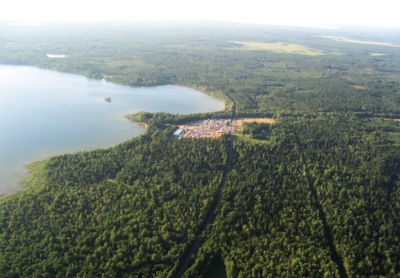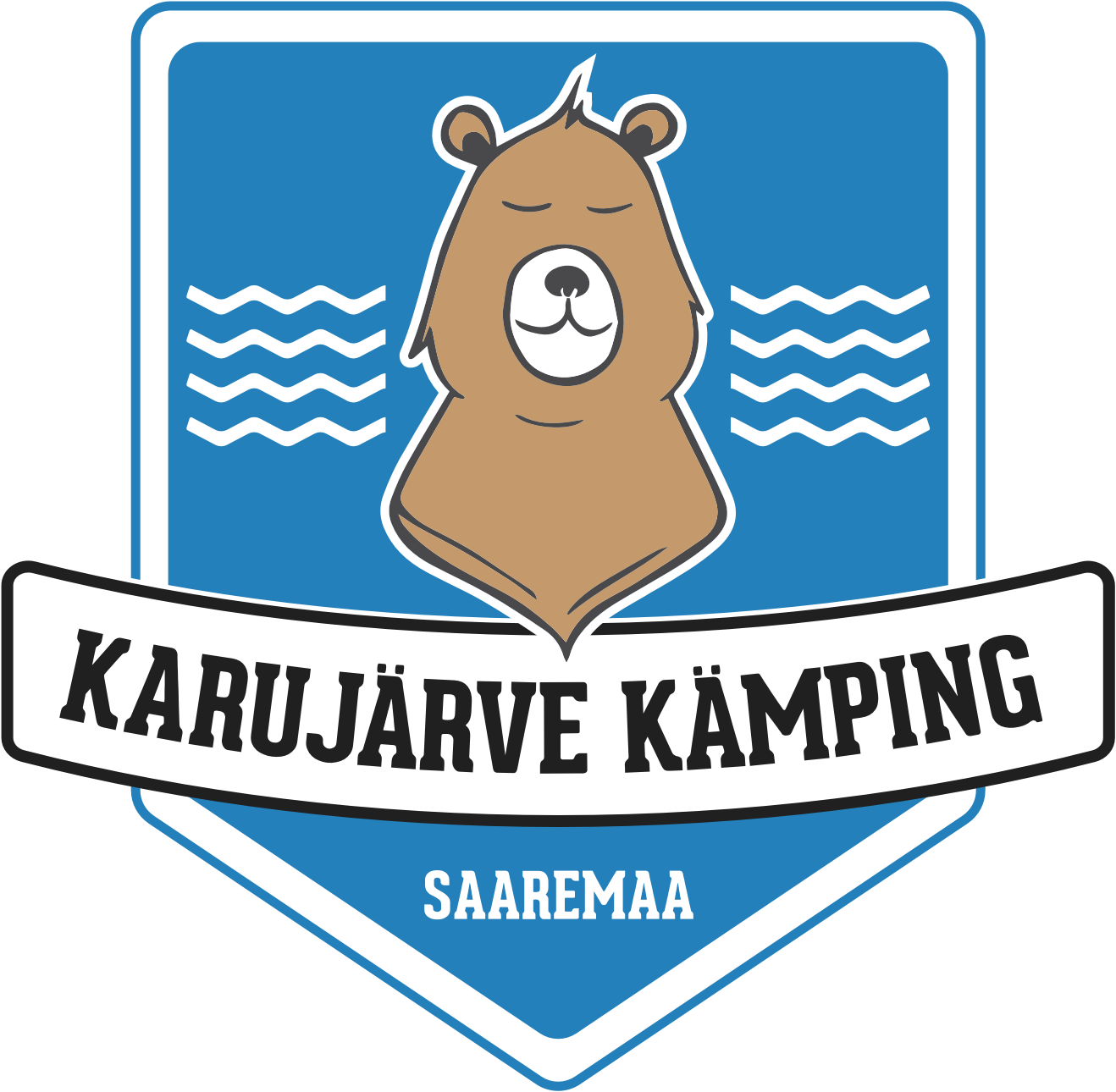About Karujärve
The most beautiful lake in Saaremaa is located on the Lääne-Saaremaa uplands, 4,5 km north-west from Kärla borough, 32,2 m

from sea level. It's also called Järumetsa, Järvemetsa and Järvmetsa lake. Its surface area is about 330 ha, and the deepest spots can go down to 6 m. The north-east side of the lake - south-west from Oinarahu - is the deepest. After lowering the water level in 1932, its surface area and depth have decreased.
Karujärv is surrounded by a forested landscape with a wavy relief. A few hundred metres north is little Mudajärv, once a part of Karujärv, which now has only a metre of water. The surrounding surface is mostly made of gravel and sand. There are fields east and west from the lake, civilization on the north shore, and on the east shore there are roomy camping grounds.
Karujärv is jointed with the shoreline and several islands, which is why it's been called the Pühajärv of Saaremaa. There are five islands: Suur- or Kandlesaar, Oinarahu, Väikesaar, Linderahu and Kivirahu; what once used to be Kuumi or Sarapiku island, has turned into a peninsula.
The shore of the lake is downright, a bit higher on the north side, covered in gravel and sand, sometimes rocks. Only the south shore has shallow and muddy bits. The north relief is restless. The bottom is usually covered by sand and gravel, a muddy bottom can only be found deeper than 2-2,5 metres, where the thickness of the mud layer is 3-4 metres.
There are a lot of rock reefs between Suursaar and Oinarahu, elsewhere you can find chunks of wood by the shore. The drainage area of the lake is small. There are only a few little streams flowing into it. There are some springs in the bottom of it. Flowing out of it is the Vesiku (Kemmi) stream, which disappears into the Kalja gorge in 5 km.
The greenish water of Karujärve was very clear from 1954-1956 (4-5,1m) and warmed and mixed quickly. Now we can see some decrease in clarity. The lake's winter gas regime is good. Composition wise, the Karujärve water differs from other lakes in Saaremaa, and is more like the water in continental Estonian lakes.
The flora was abundant in 1954, but there was only 13 different species. There is little phytoplankton. There's also some Cyanophyceae blooming.



